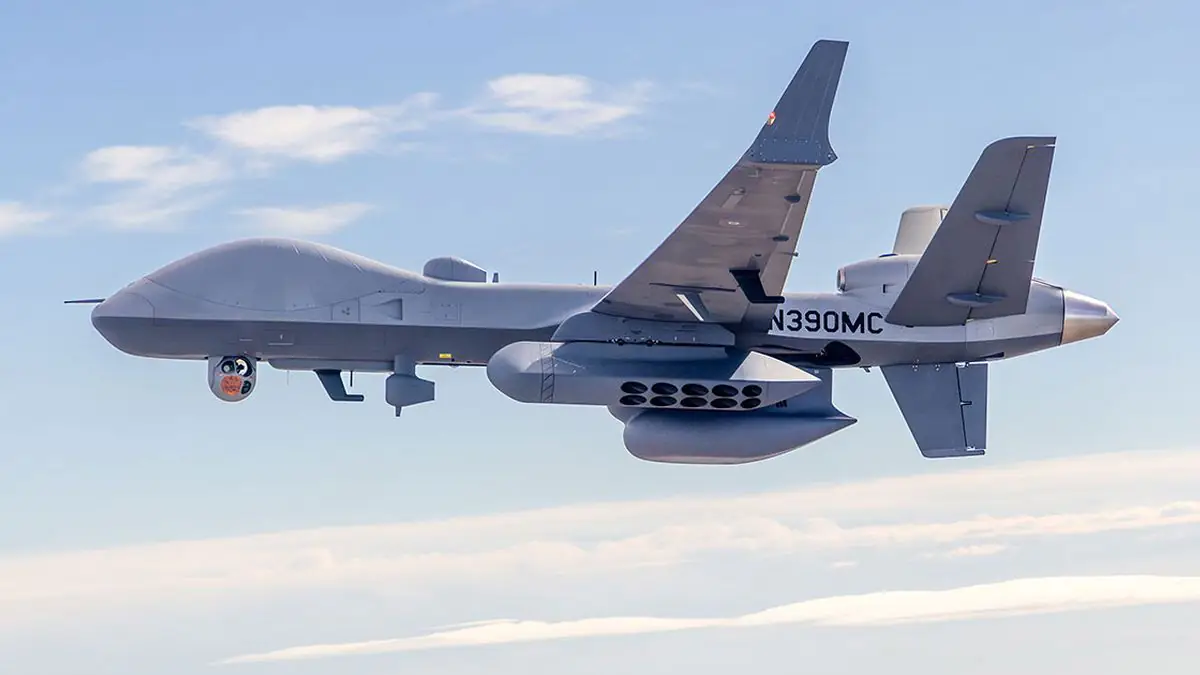General Atomics Aeronautical Systems, Inc. (GA-ASI) showcased the capabilities of its MQ-9B SeaGuardian unmanned aerial system during the recent Rim of the Pacific (RIMPAC) 2024 exercises, as reported on the company’s blog.
During the world’s largest international maritime exercises, the MQ-9B SeaGuardian drone logged nearly 100 flight hours, effectively supporting operations conducted around the Hawaiian Islands.

The MQ-9B SeaGuardian, a maritime variant of the MQ-9B SkyGuardian, demonstrated new capabilities during the RIMPAC-2024 exercises. Among these were a long-range anti-ship missile (LRASM) guidance system and a prototype sonobuoy deployment system (SDS) that enhances the drone’s anti-submarine warfare capabilities. It was noted that the system was also equipped with Raytheon’s SeaVue multi-function radar and can deploy and control up to 40 sonobuoys. This allows the U.S. Pacific Fleet Command to receive real-time intelligence, surveillance, and reconnaissance data.
The drone boasts an endurance of over 18 hours and can conduct eight-hour patrols within a 1,400-mile radius. During the exercises, the drone effectively operated with various units, as reported by General Atomics.
“During the RIMPAC exercises, the MQ-9B effectively transmitted reconnaissance and technical information to various surface and airborne units, including the U.S. Navy’s Nimitz-class aircraft carrier USS Carl Vinson, guided-missile destroyers, coastal combat ships, frigates, patrol boats, P-8 and P-3 maritime patrol and anti-submarine aircraft, as well as numerous American and international units participating in the exercises,” stated GA-ASI President David R. Alexander in the announcement.
During the exercises, the SeaGuardian drone also utilized new technologies such as the Joint Range Extension Application Protocol Link 16 (JREAP-C) and the integrated Minotaur system, which enhanced data transmission capabilities from sensors to various maritime operations centers, ships, and aircraft involved in the exercises.
The SeaGuardian autonomously deployed to the GA-ASI Desert Horizon airbase in El Mirage, California, marking the completion of its participation in the exercises.

Shortly after, the company announced that the Japan Coast Guard has signed a contract with General Atomics to acquire two SeaGuardian drones, with delivery scheduled for 2025. This follows the lease of SeaGuardian drones since 2022, during which the system has conducted many successful missions. The Japan Coast Guard has actively used the SeaGuardian for various missions, including supporting search and rescue operations and disaster response. Notably, the drones were employed during the 7.6-magnitude earthquake earlier this year in Ishikawa Prefecture and for maritime surveillance during the G-7 summit in Hiroshima in 2023. In all cases, the system proved to be effective and successful.
Source: ukdefencejournal








